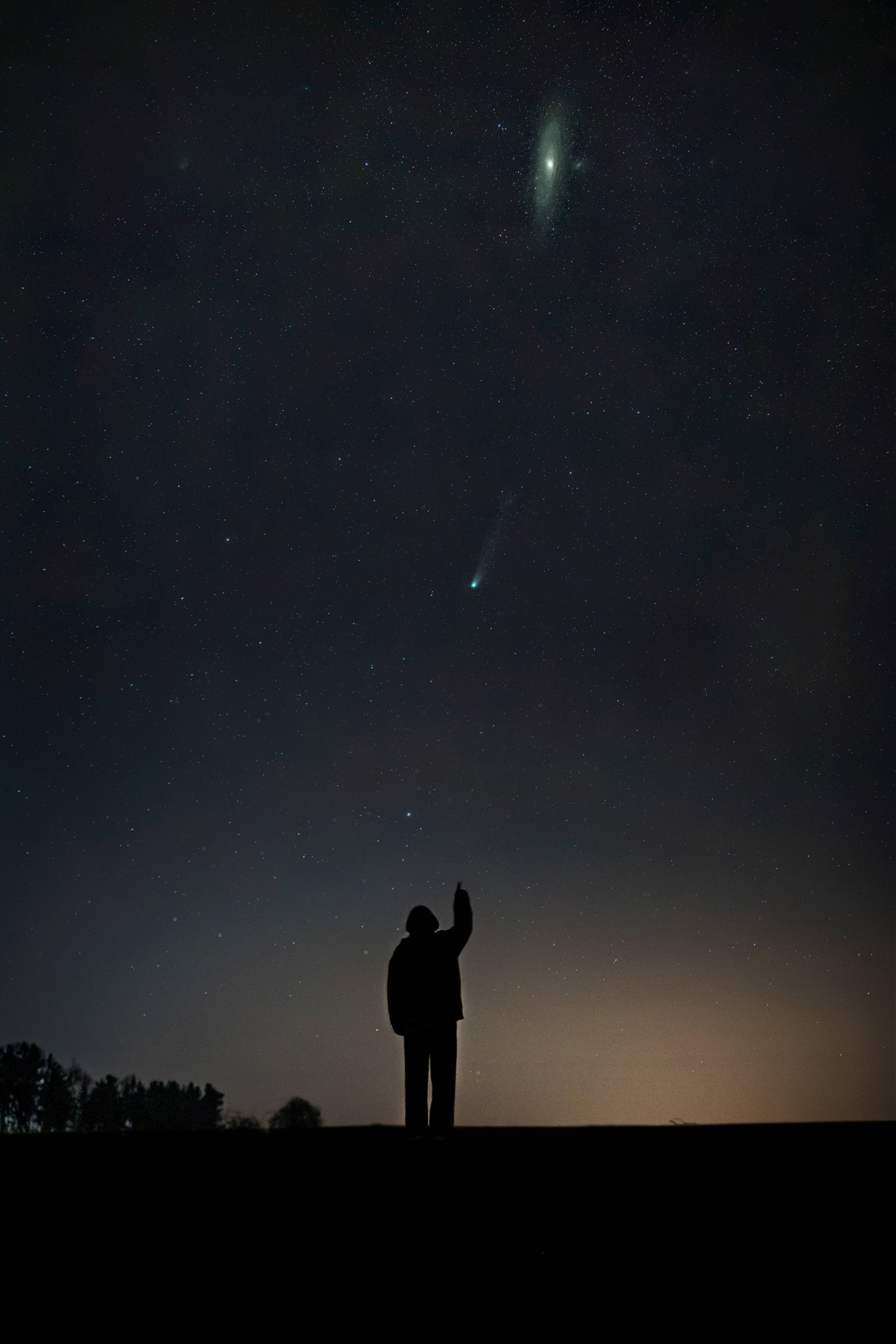One of cosmic history’s greatest acts of photo-bombing will take place on April 8, when the great solar eclipse is unfolding across North America. Tens of millions of people in the path of the event will be turning their eyes upward as the moon passes in front of the sun. But at least a few people—including an untold number of astronomers—will be looking off to the side too, as Comet 12P/Pons-Brooks, more evocatively known as the Devil Comet, streaks through the skies.
It was 1954 when the Devil Comet last reached perihelion—its closest approach to the sun. A gallon of gas cost 29⊄ and the top-grossing U.S. movie was White Christmas. The comet’s appearance at the time made it a celestial headliner. Its appearance during the eclipse this month will make it a sort of cosmic undercard, but that doesn’t mean it’s not a striking celestial object.
First spotted in 1812 by French astronomer Jean-Louis Pons, and then confirmed on a later pass in 1883 by American astronomer William Brooks, the comet is something of a bruiser, measuring 17 km (10.5 mi) across. For comparison, Halley’s Comet is 15 km (9.3 mi.) long. The asteroid that wiped out the dinosaurs is thought to have been about 10 km (6.2 mi.) in size.
Read More: Where You Can Watch the Solar Eclipse
It’s no minor feat to determine a comet’s dimensions when you’re viewing it from tens or hundreds of millions of miles away. The Devil Comet had its measure taken in 2020. Researchers used the Lowell Discovery Telescope in Flagstaff, Ariz., to analyze its brightness as its icy and rocky surface reflected light from the sun. Brightness is often used as a proxy for size, with larger cosmic objects of a known composition emanating more light than smaller objects of the same composition.
Despite the comet’s prodigious dimensions, it poses no danger to us. At its closest approach to Earth, which will come on June 2, it will be 232 million km (144 million mi.) away from us. That’s significantly more than the Earth’s 150 million km (93 million mi) distance from the sun.
The comet takes its literally hellish name from an eccentricity in its appearance. Like Halley’s Comet, 12P/Pons-Brooks is a so-called cryovolcanic object, meaning that its icy surface sometimes erupts as a result of heating by the sun. Last July, one such eruption took place, causing the comet to blow out a forked tail—likely due to a relatively ice-free notch in its surface. The twin streaks give the comet the appearance of devil horns. That descriptor is an ancient one, but more contemporary skywatchers also call 12P/Pons-Brooks the Millennium Falcon comet, due to its resemblance to Han Solo’s iconic spacecraft.
Read More: These Are All the Different Types of Eclipses
The comet is currently visible from Earth’s northern hemisphere during early evenings by looking toward the west-northwest horizon. Ordinarily, 12P/Pons-Brooks would be far too faint to see during the day, but when the eclipse causes the sun to darken, there is at least a chance the comet will pop out of the gloaming. If it does, it will appear to be about 25 degrees away from the sun—or about the width of two fists held at arm’s length. Just where on the clock face it will be relative to the sun will depend largely on the vantage point from which you’re viewing it from Earth.
So should you go looking for 12P/Pons-Brooks when the eclipse is unfolding? Nah. The comet, at best, will be a small smudge in the sky. The total eclipse, which will last no more than four and a half minutes at its peak in southwest Texas and half that length or less from some other points along its path, will be transcendent. You can look for the comet that very night. Another total solar eclipse, by contrast, won’t return to the 48 contiguous states until 2044.
More Must-Reads from TIME
- Why Biden Dropped Out
- Ukraine’s Plan to Survive Trump
- The Rise of a New Kind of Parenting Guru
- The Chaos and Commotion of the RNC in Photos
- Why We All Have a Stake in Twisters’ Success
- 8 Eating Habits That Actually Improve Your Sleep
- Welcome to the Noah Lyles Olympics
- Get Our Paris Olympics Newsletter in Your Inbox
Write to Jeffrey Kluger at jeffrey.kluger@time.com
